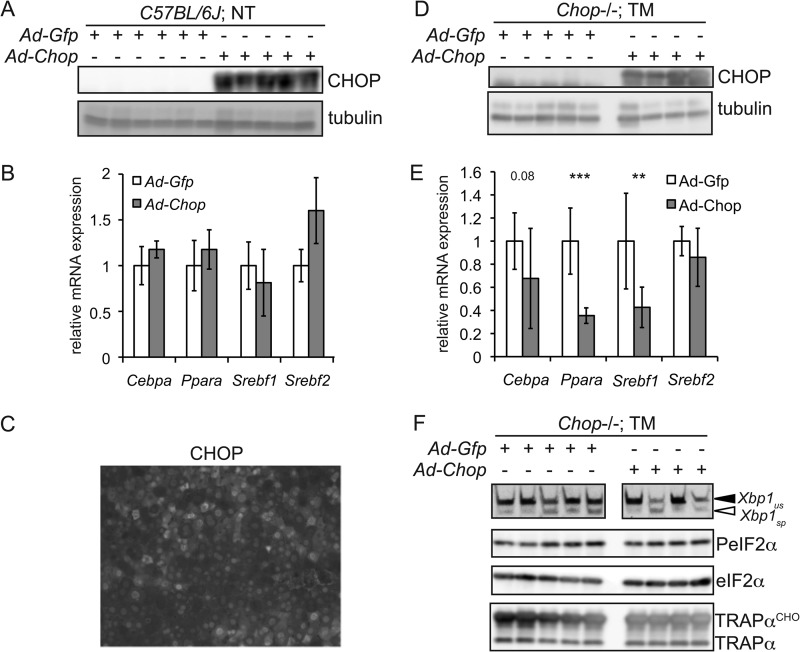FIGURE 4.
CHOP suppresses metabolic genes in the presence of a concomitant ER stress signal. A, wild-type mice were infected with recombinant adenovirus expressing either GFP (Ad-Gfp) or CHOP (Ad-Chop) by tail vein injection. Livers were analyzed by immunoblotting for expression of CHOP or tubulin as a loading control. NT, non-treated. B, expression of the indicated mRNAs from animals in A was assessed by qRT-PCR. C, formalin-fixed paraffin-embedded liver sections from Chop−/− animals injected with Ad-Chop were assessed for expression of CHOP by fluorescent IHC. A representative image is shown. Note that the majority of cells show CHOP-positive nuclei. D, Chop−/− animals were infected with Ad-Gfp or Ad-Chop. Animals were then challenged with 1 mg/kg TM for 8 h. Expression of CHOP and tubulin was assessed by immunoblotting of liver lysates. E, expression of the indicated mRNAs from two separate experiments as described for D was assessed by qRT-PCR (Ad-Gfp, n = 8; Ad-Chop, n = 9). **, p < 0.01; ***, p < 0.001. F, livers from animals treated as described for D were assessed for Xbp1 splicing by RT-PCR or for eIF2α phosphorylation (PeIF2α) and TRAPα glycosylation (TRAPαCHO) by immunoblotting. Spliced (sp) and unspliced (us) Xbp1 mRNAs are shown.

